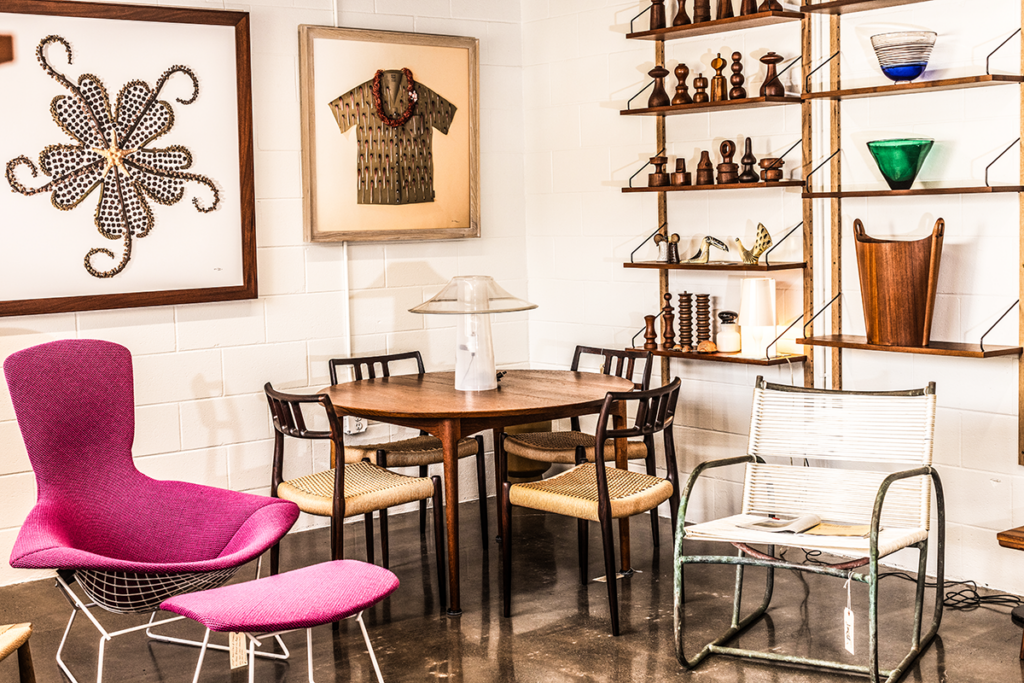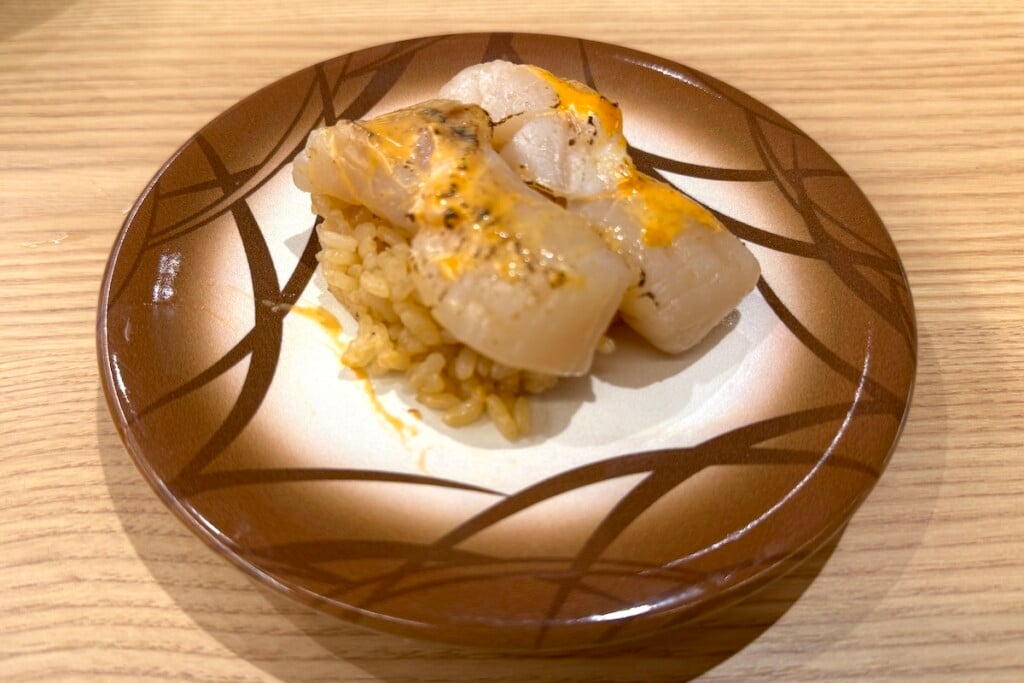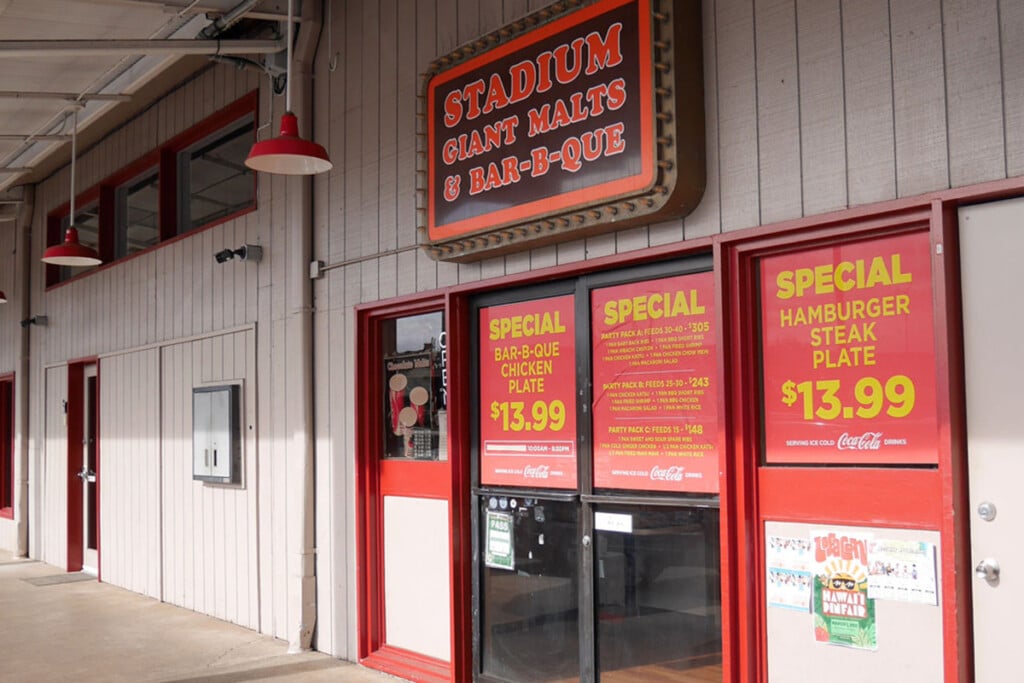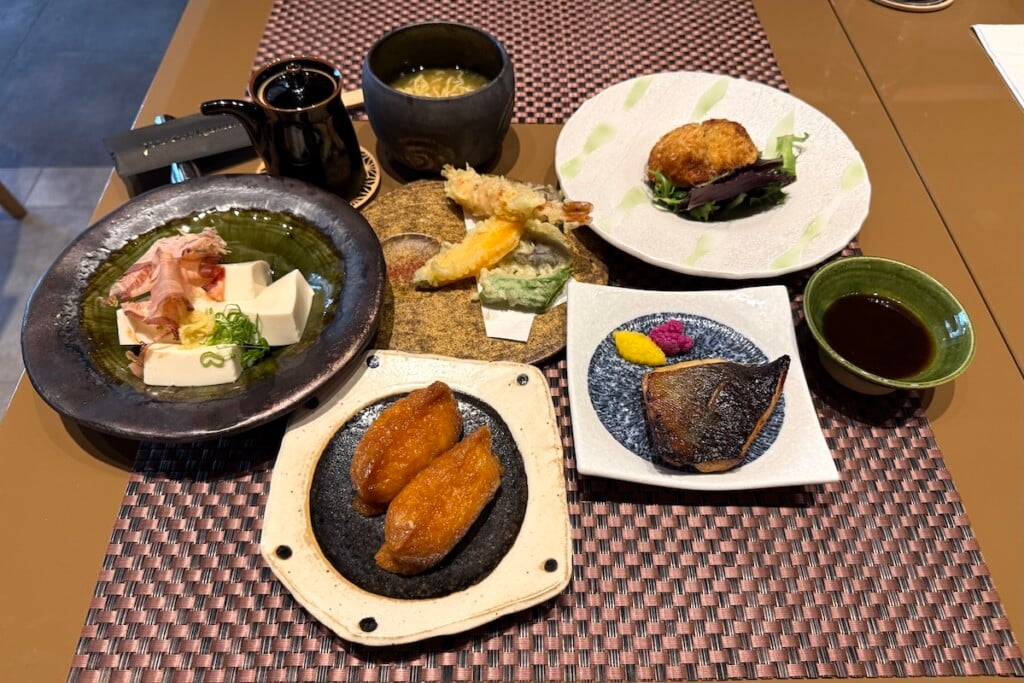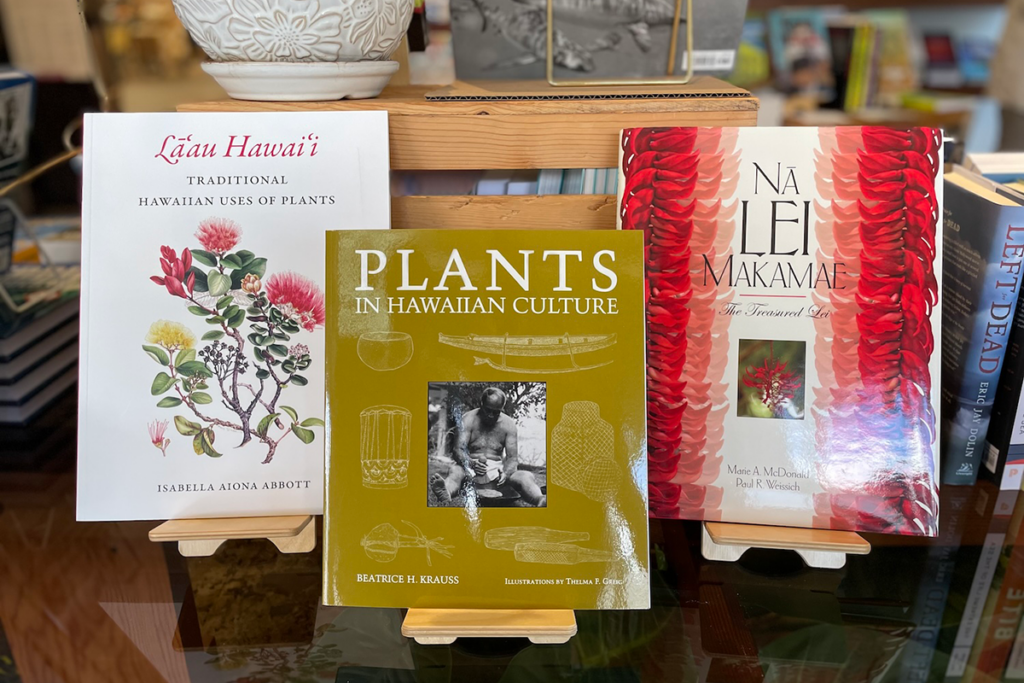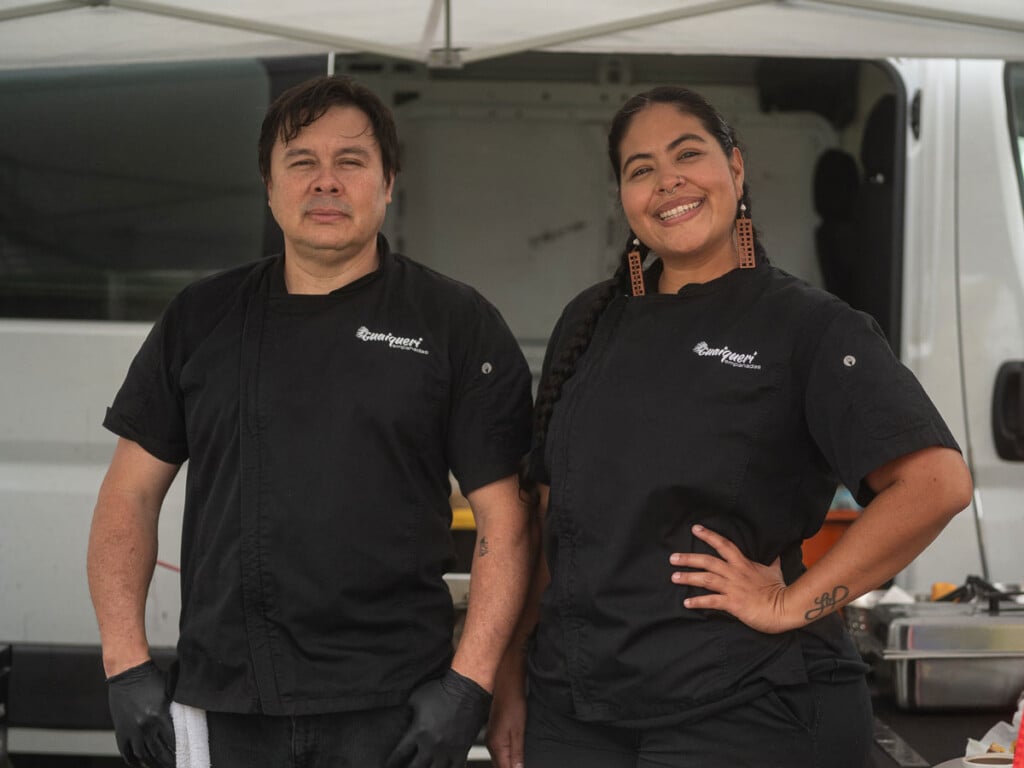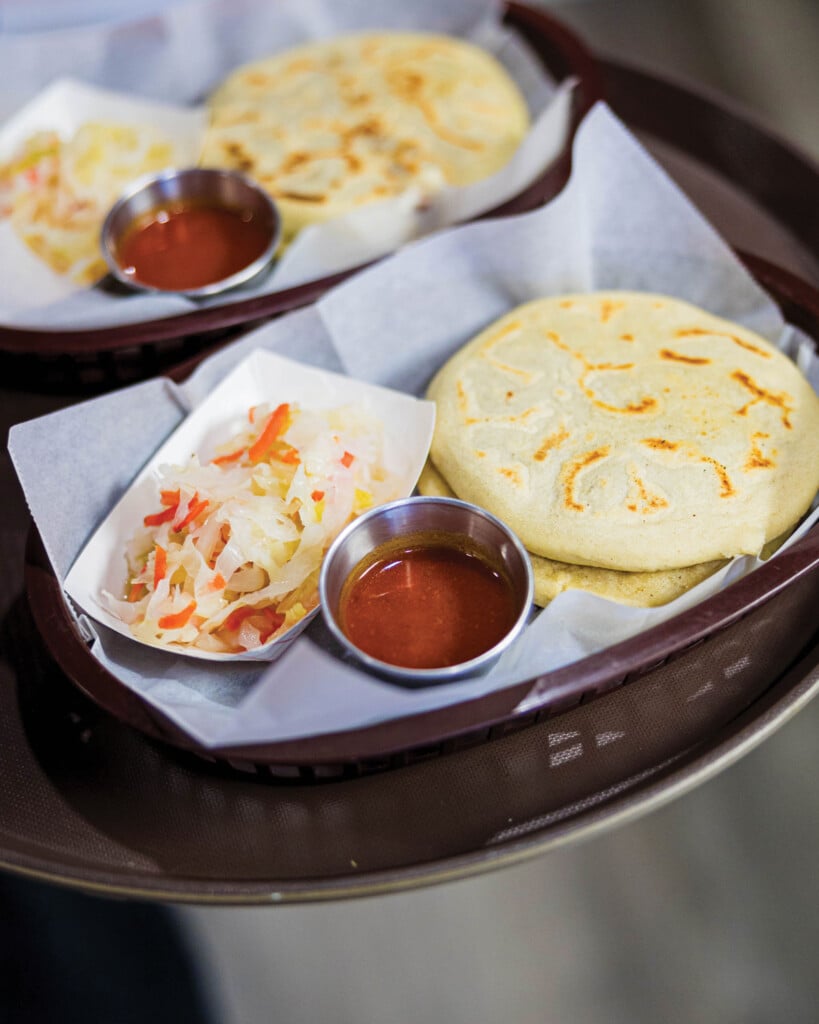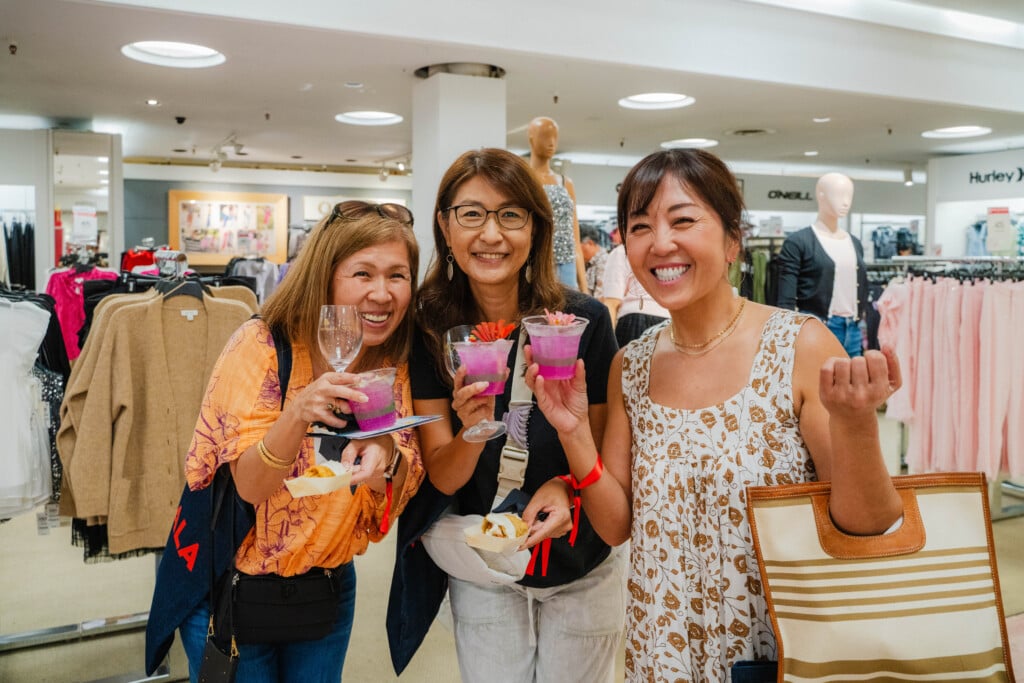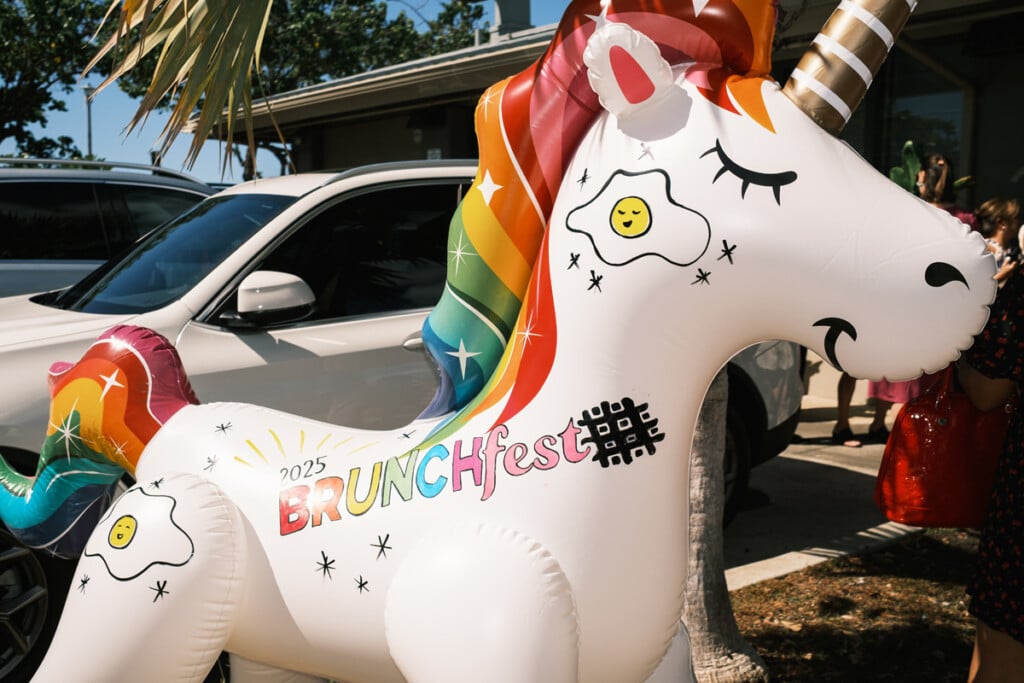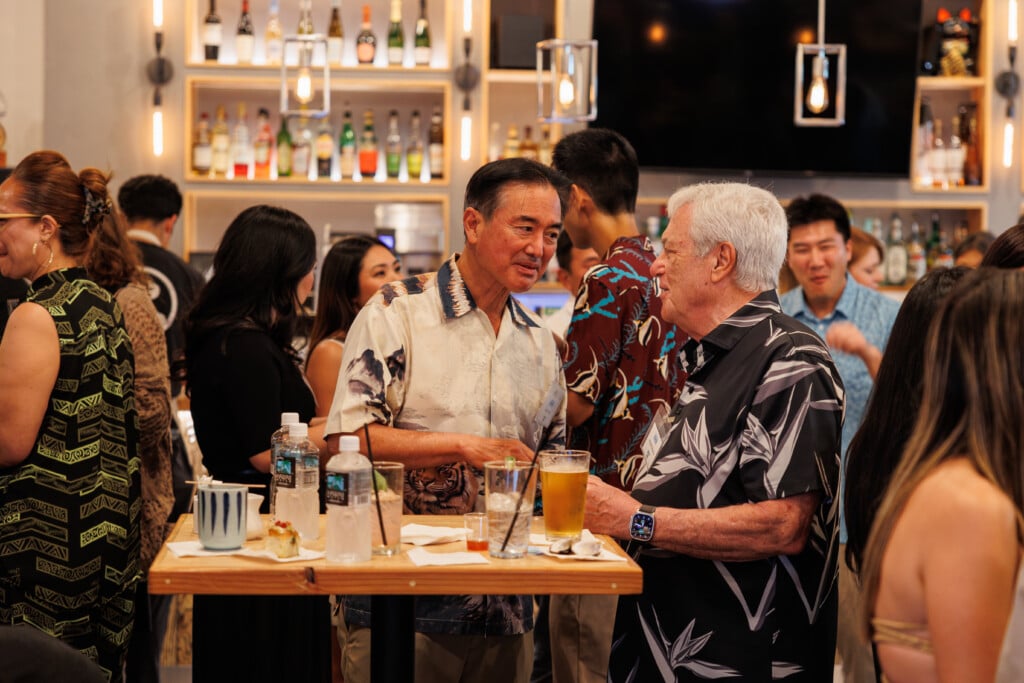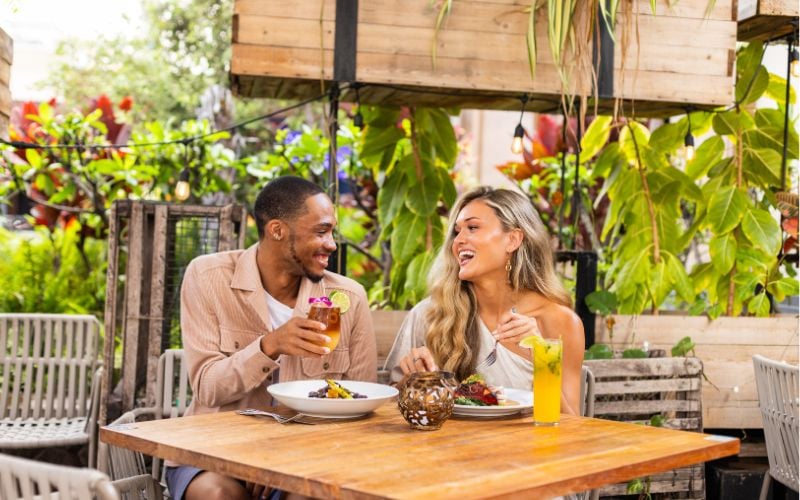Restaurants We Love: Resonant Stories From the Best Restaurants in Honolulu
Restaurants with superlative food are one thing. Those with a place in our hearts are another. In these essays, our writers explore their feelings for The Pig & The Lady, Helena’s Hawaiian Food, Lam’s Kitchen, Morning Glass Coffee, Le’s Banh Mi, Pizza Mamo, Southern Love, MW Restaurant, Hawai‘i Dim Sum & Seafood and Kapa Hale.
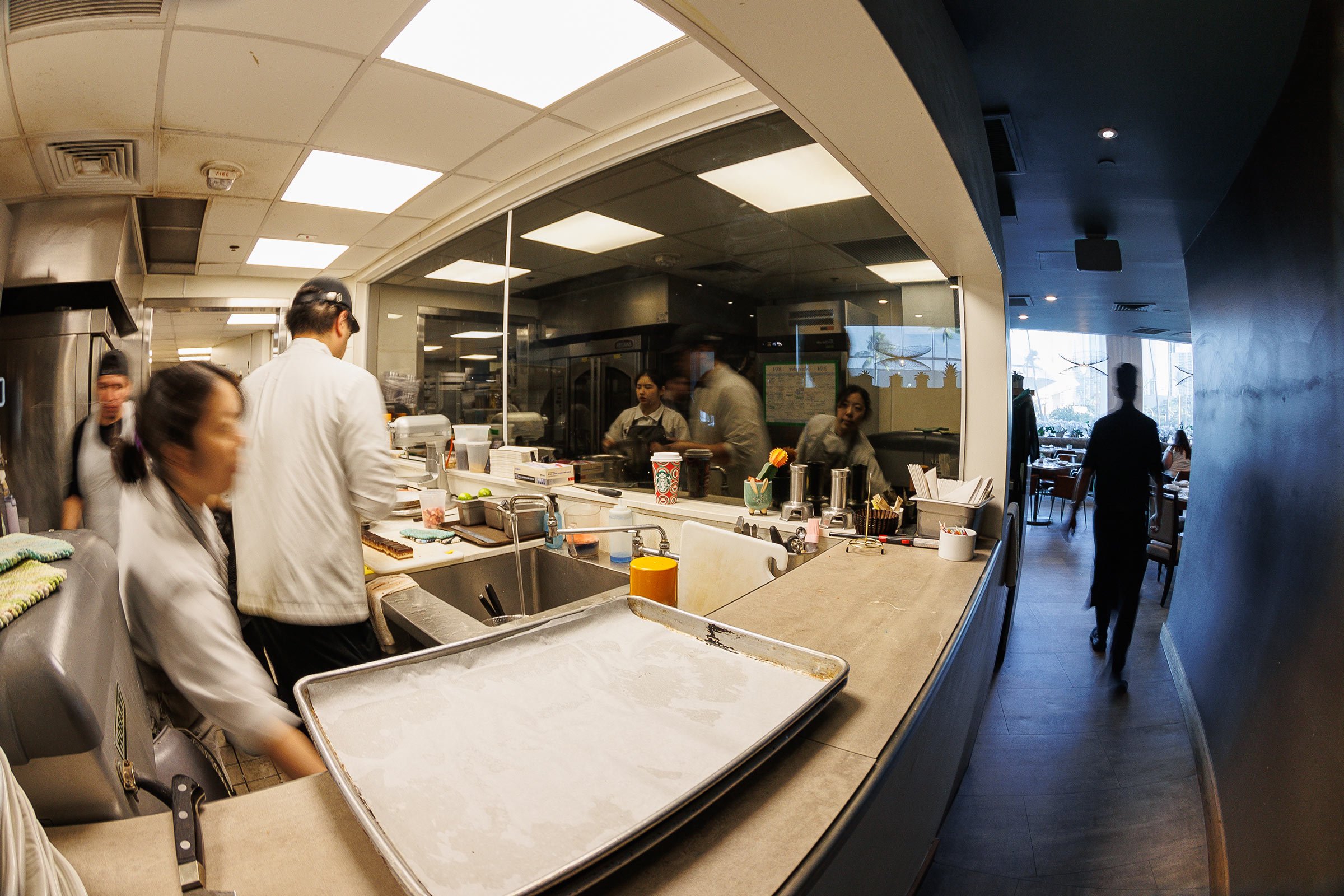
The best restaurants in Honolulu? These places are exceptional in their categories because of consistent flavor and execution, of course. They’re also eateries we think are worth our hard-earned dollars, whether it’s $20 or $200.
You’ll find the complete list of Honolulu’s 34 Best Restaurants here. What fills the rest of this post is a sub-genre. Restaurants we respect the most aren’t always the ones we love. Sometimes, though, they are. Those in these essays have a place in our writers’ hearts. You won’t see the reasons why on any of their menus. But you’ll taste them in their dishes.
Beyond The Food by Mari Taketa | It’s the People by Thomas Obungen | Warmth and Good Food by Melissa Chang
Beyond The Food
BY MARI TAKETA
When a restaurant’s history becomes part of mine.
℘ ℘ ℘
They had me at bo la lot. The scent of betel leaves stuffed with garlicky minced beef grilling over charcoal sent me back to late afternoons in Ho Chi Minh City, where vendors tending small hibachis lured in passing motorbikes with the heady aroma. One day in 2011, there it was at The Pig & The Lady. A nascent booth at the farmers market, Pig had only two or three items on its menu. The noodle soups and banh mi already stood out—Andrew Le, the chef and co-owner, was riffing on recipes from his Vietnam-born mother’s kitchen, heightening their flavors with crazy yin-yang balances to suit his American palate. But pho and banh mi were mainstream. Bo la lot was a neon sign pointing down a little-known side street. Le would fulfill this promise, leaning into Vietnamese street foods and homestyle dishes and then, as his confidence grew, into unknown territory.
Bruschetta topped with tofu (!) dotted with kim chee, dates and pickled grapes. Octopus ragù pasta finished with liliko‘i. The banh mi Le reinvented as a hybrid of pho and a French dip sandwich, with 12-hour braised brisket, Thai basil chimichurri and hoisin sauce in a grilled baguette that you dip in pho broth, is still a classic 14 years later, both at the farmers markets and the restaurant the Le family opened in Chinatown in 2013.
Food is the foundational starting point of all the restaurants our team considers the best. Restaurants we love? There our paths diverge—but not too much. We all love food that consistently meets or surpasses the mark. We love a place more when we come to know and respect its people and ethic.
Add to my list creativity. Restaurants that are past their prime tout too many classics and from-the-vault prix fixes. Not so at Pig, whose restaurant menu Le refreshes every season. This is where love takes a toll. Some dishes hit, some don’t; all are one-offs that, even over customer and staff objections, are doomed to disappear. Le is always more excited about a new idea in his head. How can I not love Pig?
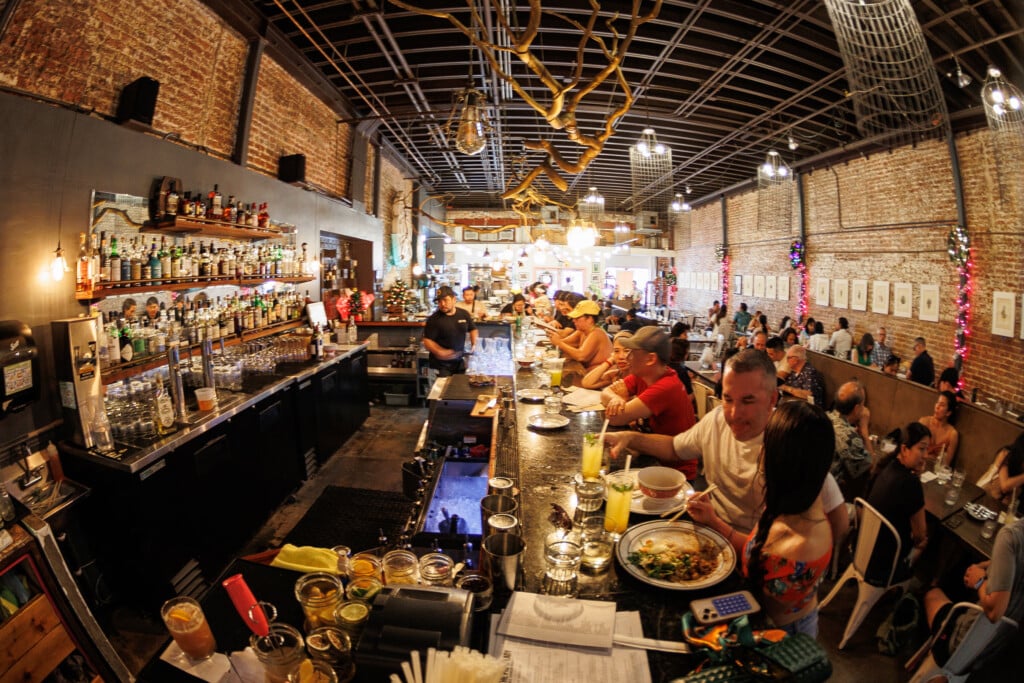
Helena’s Hawaiian Food hits different. I found it years ago on King Street near Farrington High School, all of nine tables and an ancient open kitchen behind a screen door. The walls were dingy and the pots dented, but I didn’t care. Helena’s was my first foodie pilgrimage. I’d read about it in a local short story—a passage about a socially outcast teenager who treats his friend, a senior about to graduate from Farrington, to a lunch of lau lau and sweet Maui onions dipped in salt—and borrowed my mother’s car to get there. I’d been eating Hawaiian food my whole life. But now I understood its resonance: It’s the food of place, this place, of home as we know it; and its simple, enduring dishes anchor moments in our lives with love and connection.

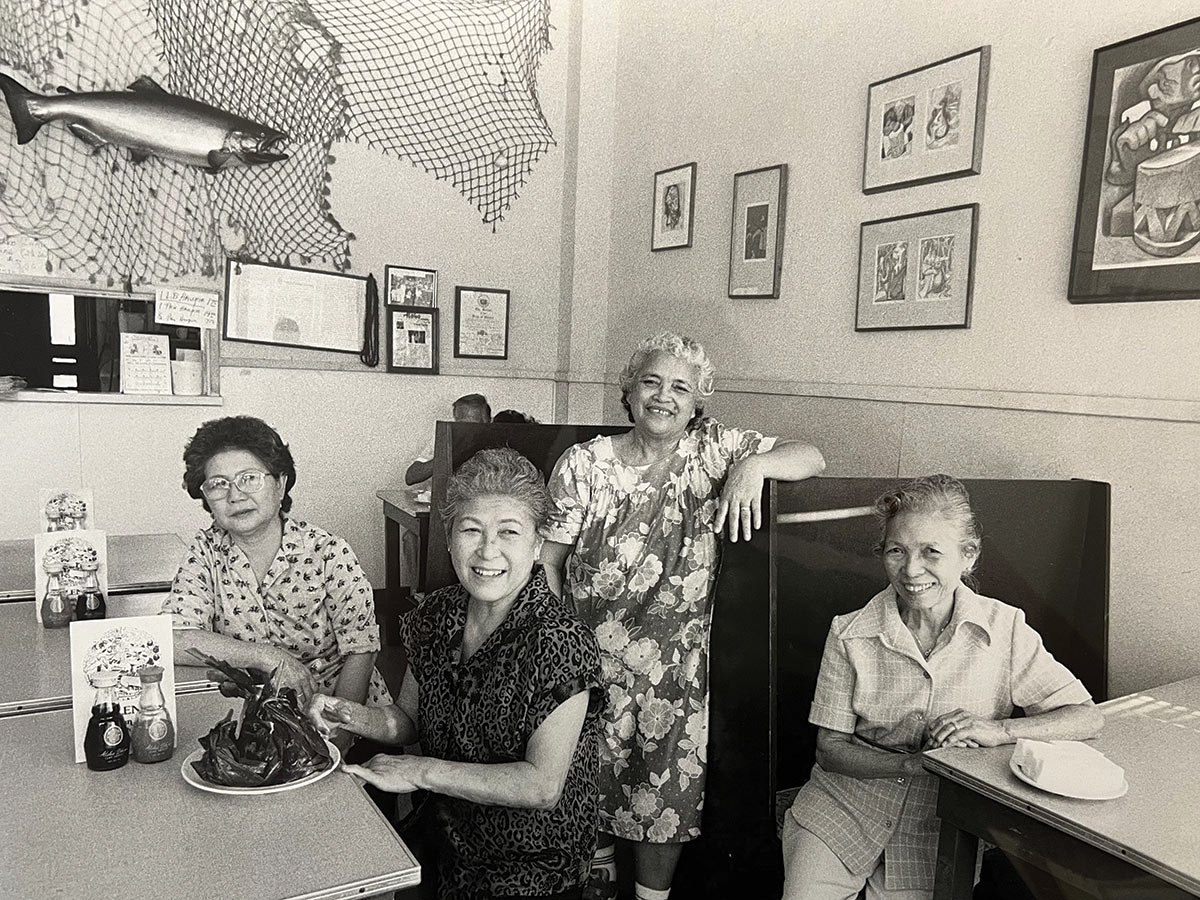
Inside Helena’s, the captain of it all bustled in slow motion with a pencil jammed behind her ear. Helen Chock had already been running her own place for 40 years. Wizened and slightly hunched, she seemed the kind of lady who could scare small kids. But as she won a James Beard Award, moved across Kalihi to a bigger spot on North School Street, and racked up airtime on national food shows, I learned that Chock was as kind as she was iron-willed. Squid lū‘au, ‘ahi poke with ‘opihi, fried butterfish collars, her legendary pipi kaula: Chock never veered from the recipes she opened with in 1946, and she slowly relinquished the cooking to Craig Katsuyoshi, the grandson who endured a 17-year apprenticeship, only when she was satisfied that he’d never waver either.
A meal from Helena’s is perfection. Your spoon dances between kālua pig, poi, lomi salmon, lū‘au and back to poi, and all is well with the world. When my mom was sick and I needed to tempt her appetite, I stood in line at the counter to ask Chock what on the menu was healthy. Still with that pencil behind her ear, she leaned in sympathetically. “Nothing is healthy,” she hissed. I loaded up anyway, filling tiny sauce bowls at home with the greens, pinks, browns and purple of Chock’s food. My mom sat up, eyes bright, and ate every bit. Months later, after she passed, I went back and found out Helen was gone, too. I had no idea she was 89 years old. In the car, I cried. That was 18 years ago. But I still taste her flavors in every dish.
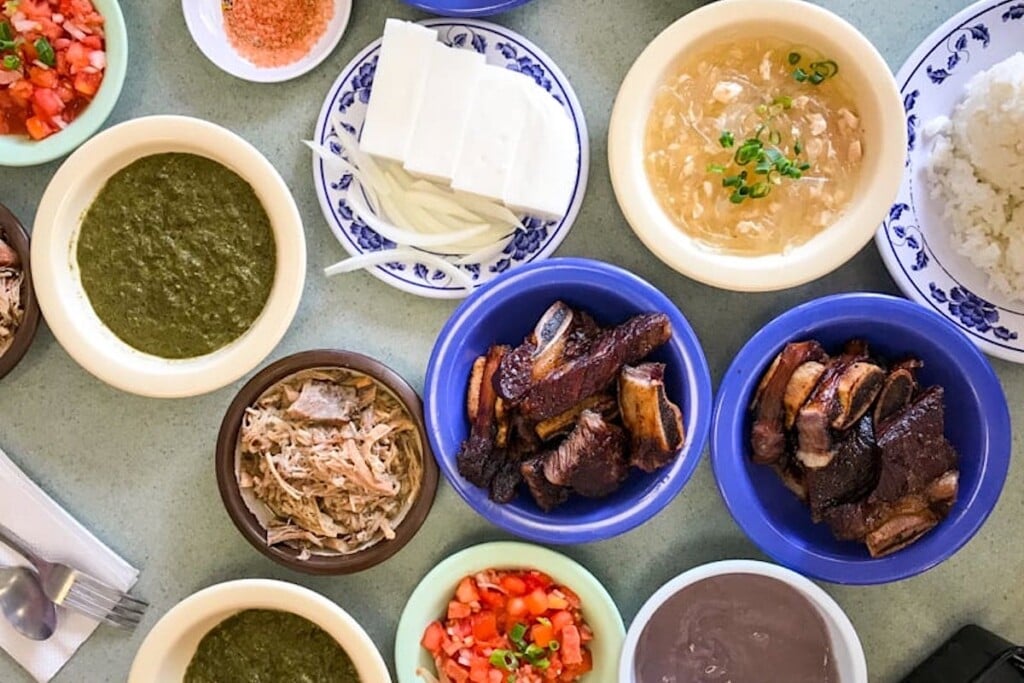
It’s The People
℘ ℘ ℘
BY THOMAS OBUNGEN
Places that serve more than just good food.
The question I am asked most often when meeting new people is one I kind of dread: “What is your favorite restaurant?” It’s not because I don’t love the topic, but it’s a question I can’t answer simply.
There are a dozen directions to go in. Our collaborative list represents places we have visited at different points in our journey and return to as often as we can. Among similar eateries, they are the ones we think are the best. Beyond this, my picks are anchored by people who dedicate themselves to crafting delicious food and the relationships they build with their communities.
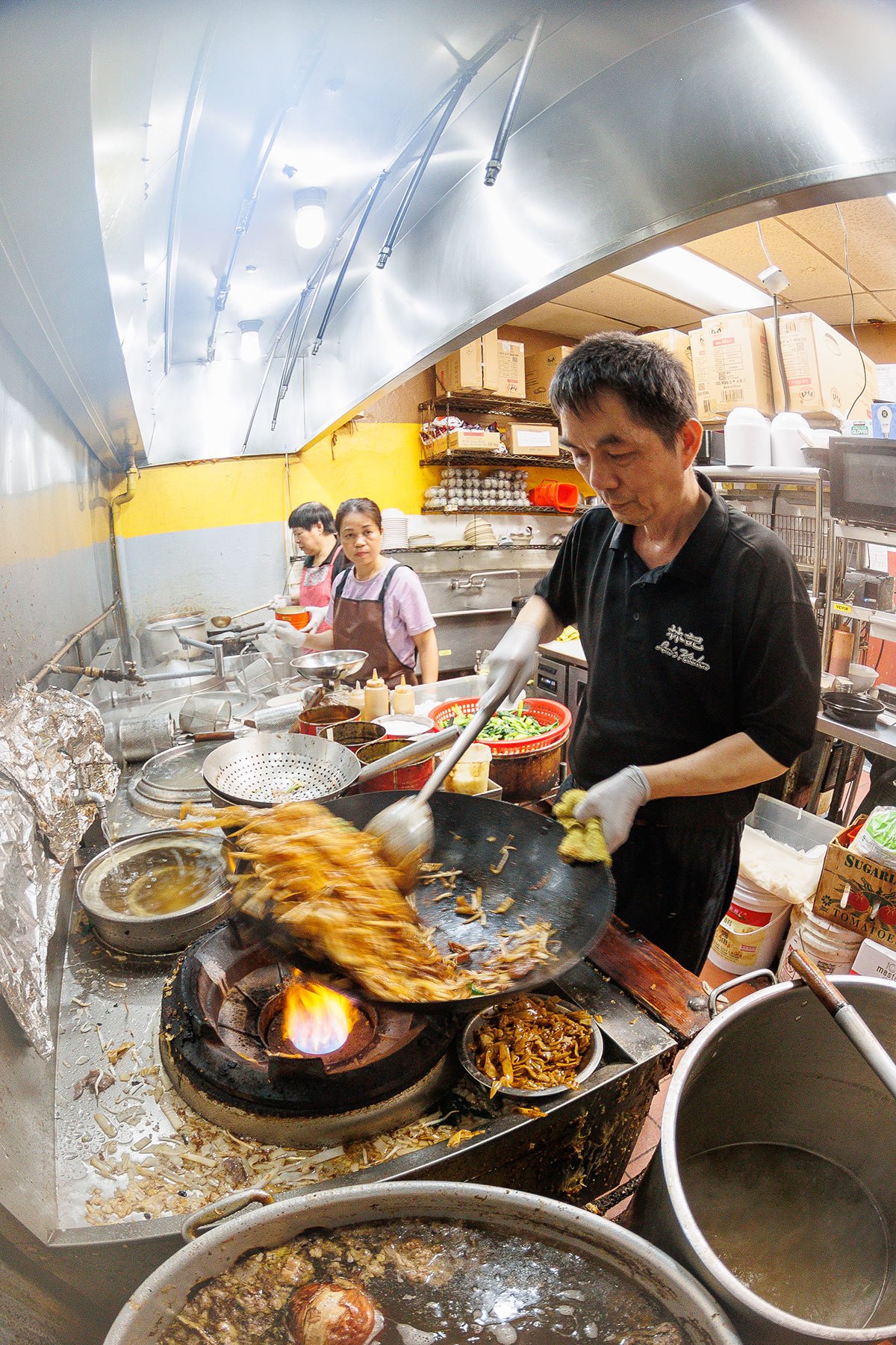
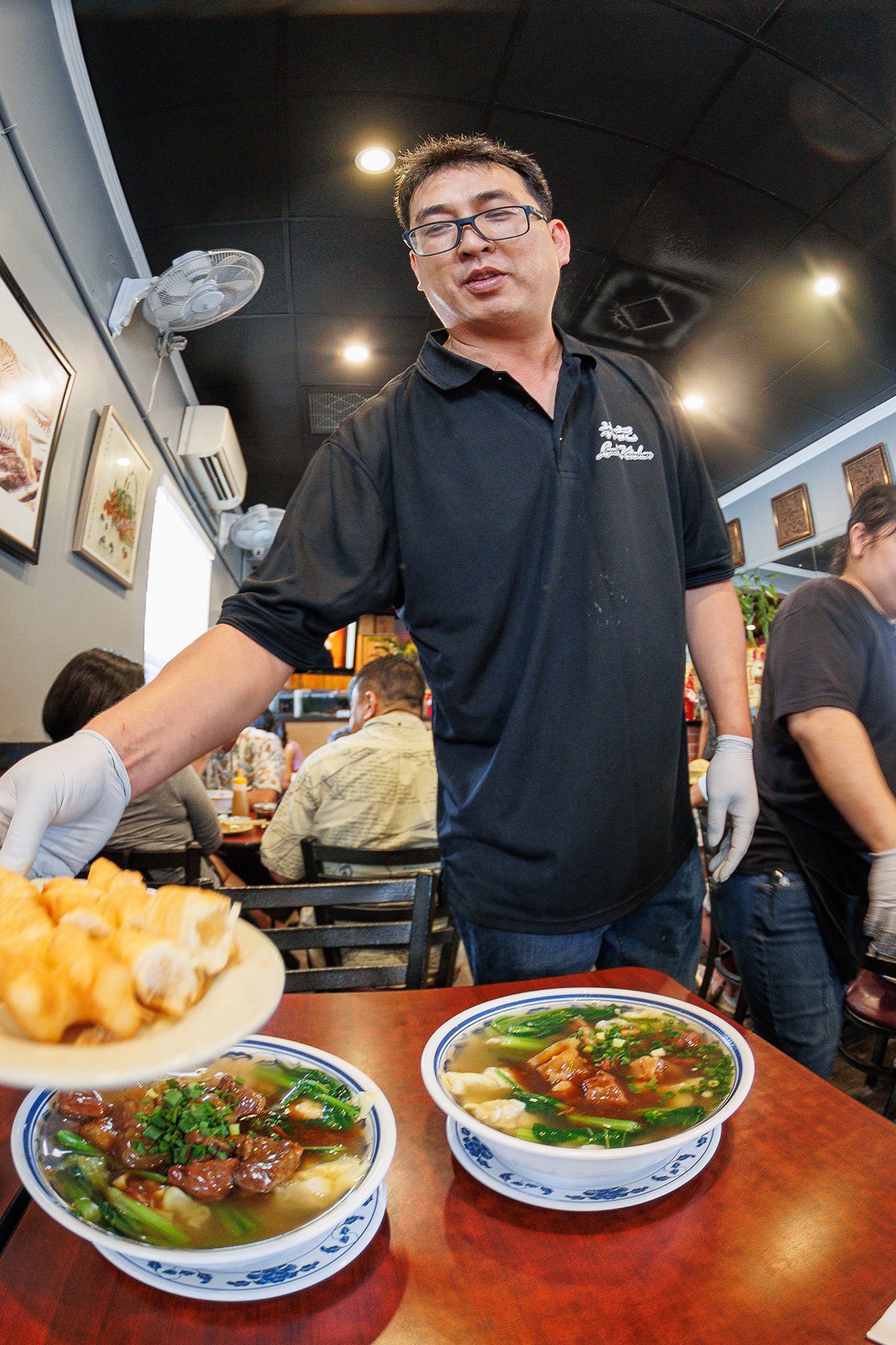
The first time my best friend took me to Lam’s Kitchen, we were working in a windowless office in Downtown. Lunch was a sacred ritual, our escape from fluorescent lighting for the delight of eating well. Lam’s was a recommendation from his Chinese in-laws, who had frequented the hole-in-the-wall for years. I didn’t need much convincing.
Lam’s isn’t a temple to Cantonese cuisine. It’s a neighborhood joint, a pillar of Chinatown, a place to see and be seen without needing to dress up. From businesspeople to Chinese bros and their popos, everyone comes here. At lunchtime, a stream of customers passes through its menu-plastered doors. Bowls of soup, near boiling, come out of a kitchen where the jet engine roar of a wok burner is nonstop.
It’s the Hong Kong classic beef noodle soup that I’m usually here for, its brisket and gelatinous tendon comingling in a savory gravy ribboned with house-made look fun rice noodles. The broth, clear and deeply beefy, is restorative. I swap the rice noodles for thin mein, egg noodles, and add a fried youtiao stick to soak up broth, which turns crimson with a few spoons of chile oil. Each time I return—for nourishing comfort, a cure for a cold or just because I’m hungry—this bowl never fails me.

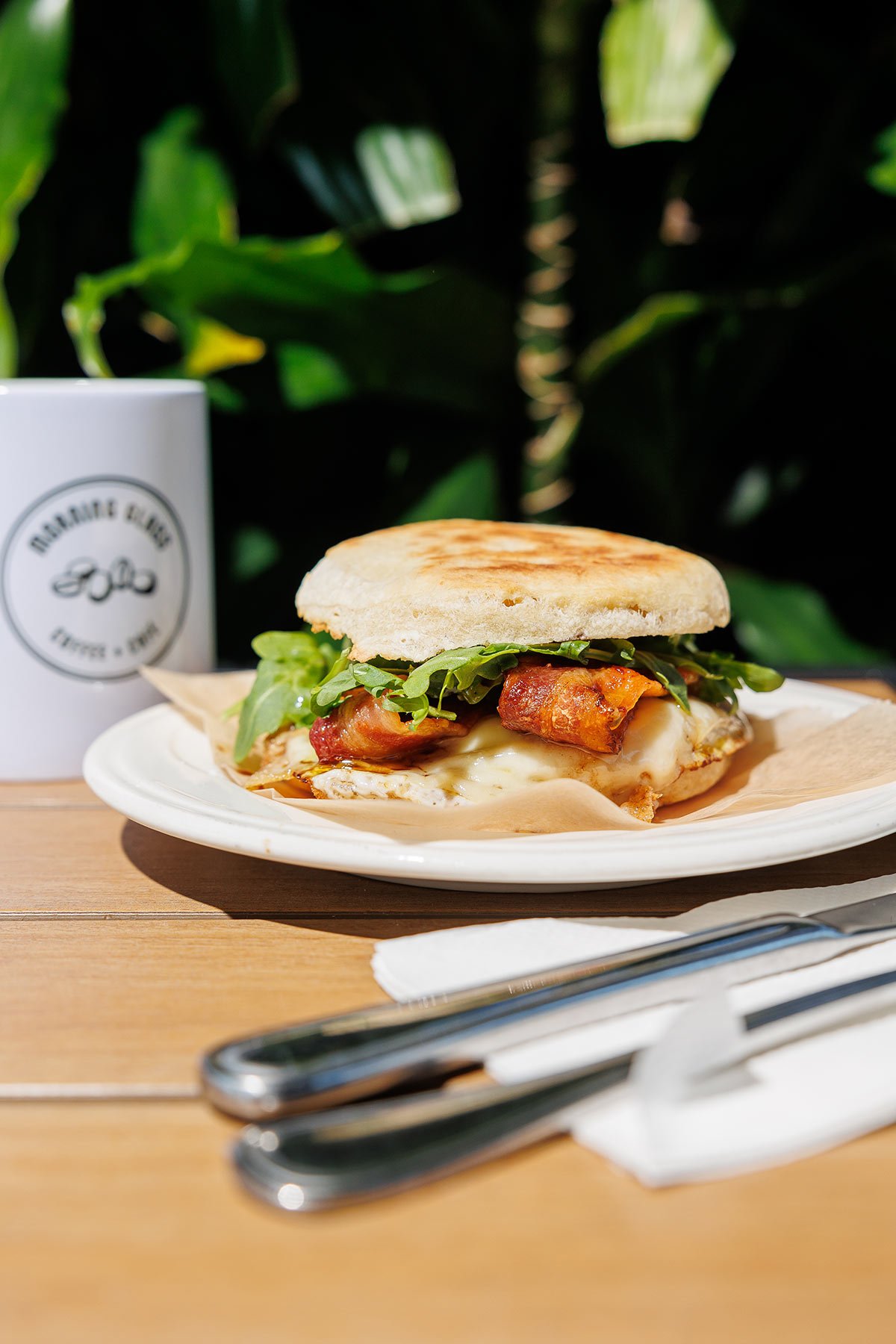
A different kind of magic is at work at Morning Glass Coffee + Café in Mānoa. Here, business is conducted over gooey mac and cheese pancakes, chorizo breakfast burritos and stacked Egg-a-Muffin sandwiches. But while the coffee shop excels at food and drink, it’s the people that keep me coming back.
Mahina Akimoto Reppun and Lani Ng bought the place in 2019 and have cultivated something rarely seen in food establishments: On average, employees stay for eight years; for some, it’s more than a decade. Catching up with Ben or Alana or anyone behind the counter is why Morning Glass is not just the best coffee shop in Honolulu, for me, it’s extended family.

Banh mi is a different story. Away from home for the first time and living in Garden Grove, California, I found sanctuary in the banh mi of Little Saigon. At $3.50 each, they were buy two, get one free and as much solace as dependable meals on a tight budget. I came to love them dearly.

In 10 years since returning home, I have eaten banh mi all over Honolulu. Those at Le’s Banh Mi in the 808 Center made me fall in love again. Chi Lam and Minh Tuan Le grew from a mom-and-pop to a full crew that churns out hundreds of crisp, airy loaves daily. Lam, a self-taught baker who missed the street sandwiches of her native Vietnam, experimented with different recipes, adapting them for Honolulu’s lower humidity until she achieved the loaves she remembered.
Nearly every component of her artisan banh mi is made in-house, from the ethereal baguettes to the pâté and mayonnaise. They’re not buy two, get one free, nor are they $3.50 (what are anymore?), but they are a well-loved staple in my rotation.
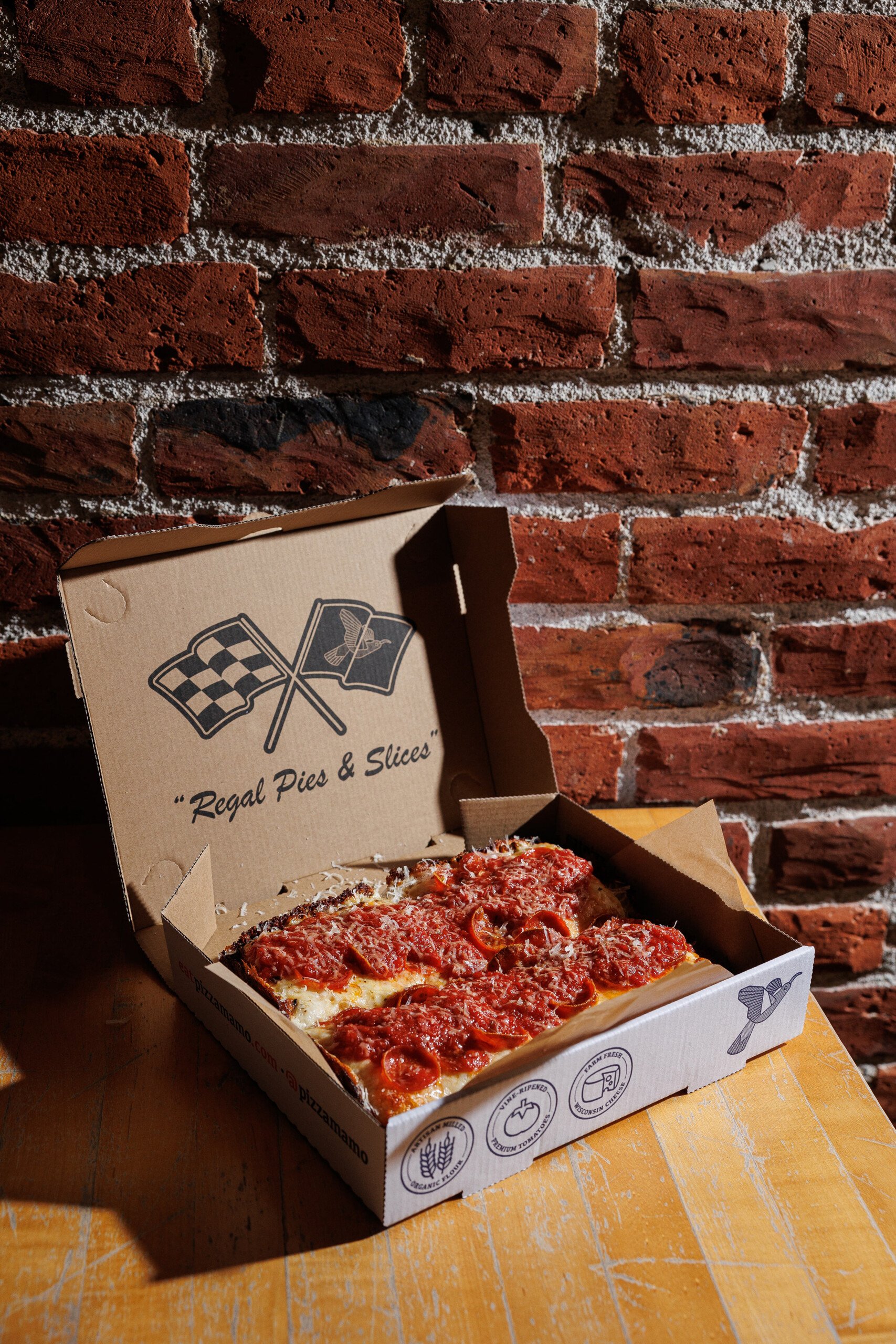

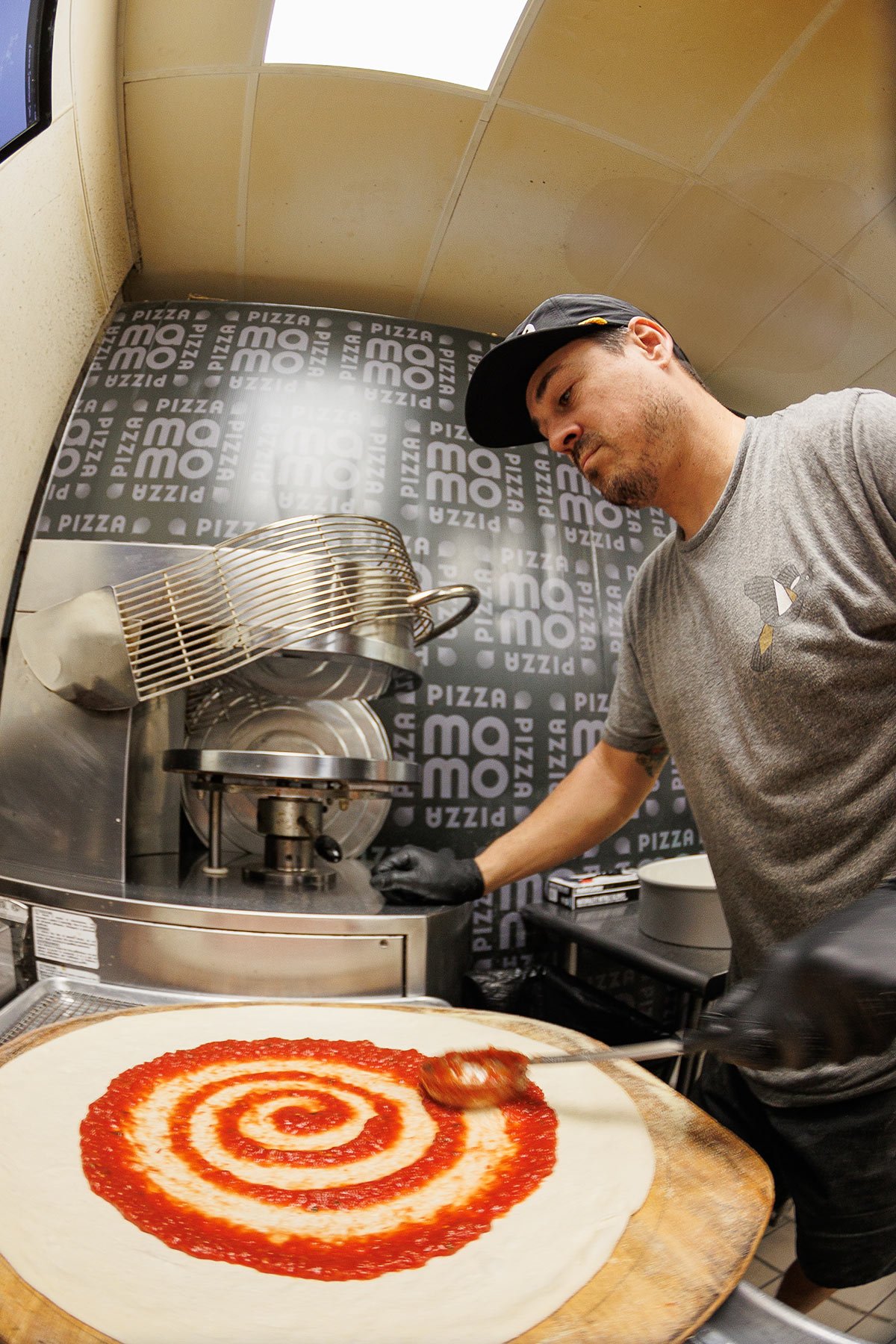
I also never pass up a chance to eat pizza. Read: I am not above indulging in a Costco slice. The pizza I crave most is at Pizza Mamo, and if you want to get specific, it’s the Detroit-style pepperoni that is my favorite.
A recent visit to Detroit and Buddy’s Pizza, creator of the style inspired by Sicilian square pies and baked in repurposed blue automotive steel pans—it is the Motor City, after all—made me appreciate anew Pizza Mamo’s dedication. Wisconsin brick cheese melts and caramelizes to form crispy corners and epic cheese pulls. The proofed, slightly fermented dough produces a crust with airy pockets. Ezzo pepperoni forms crispy cups with pizza juice. The sauce, made from crushed tomatoes and herbs, finishes the pie without overpowering the other components. I have yet to find a slice on this island that’s as good as Mamo’s.
The common thread here is that without white tablecloths or even table service, these restaurants feel special because the people behind the counters and in the kitchens care. They care about making great food (and coffee). They love what they do and how it makes people feel. That’s why I love them.
Warmth and Good Food
BY MELISSA CHANG
It’s about the total package.
℘ ℘ ℘
I love a restaurant that fills me with warmth as well as good food. It doesn’t have to be expensive. It’s much more fulfilling to enjoy a delicious meal provided by great people who I want to support over and over.
Like the folks at Southern Love. My mom worked at Hickam Air Force Base and cooked a lot of meals from recipes that the airmen shared with her. At Southern Love, chef-owner Corey Love’s food makes me think of her, with bold, rich, nuanced flavors that outshine soul food I’ve had on the mainland. There are dishes I can no longer eat anywhere else, starting with Love’s plump shrimp atop silky, creamy grits. His biscuits, moist and flaky, have layers like my mom’s and come with juicy fried chicken and rich, peppery country gravy. In his chicken and waffles dish, the garlic chicken with maple syrup reflects Hawai‘i—and it tastes as good as it sounds.
Southern Love is tiny, so you can’t help but get to know Love and everyone there. Over biscuits and gravy, I’ve talked story with his mom when she visited from Georgia, and random customers will tell anyone who will listen how the food takes them back to the South.
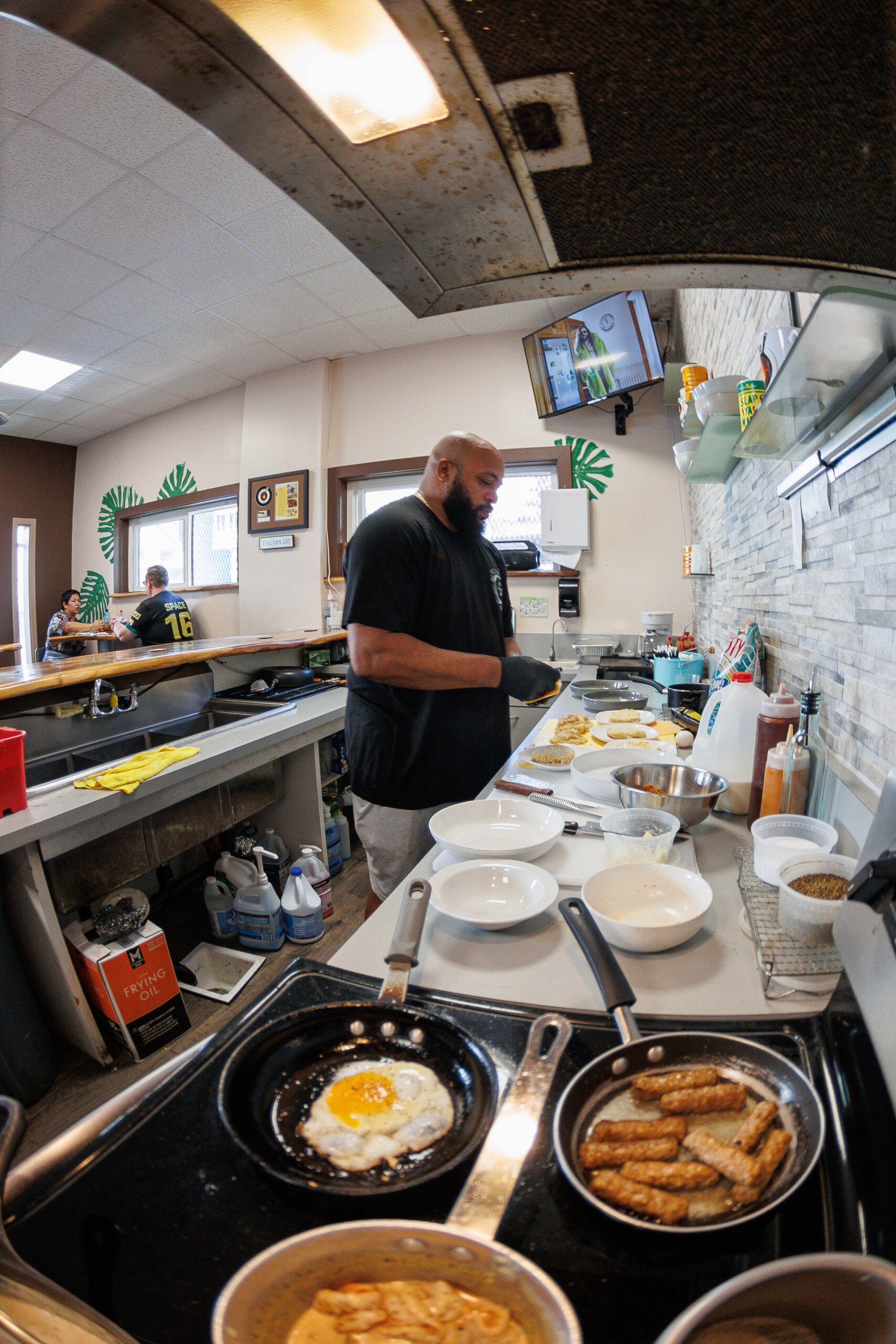
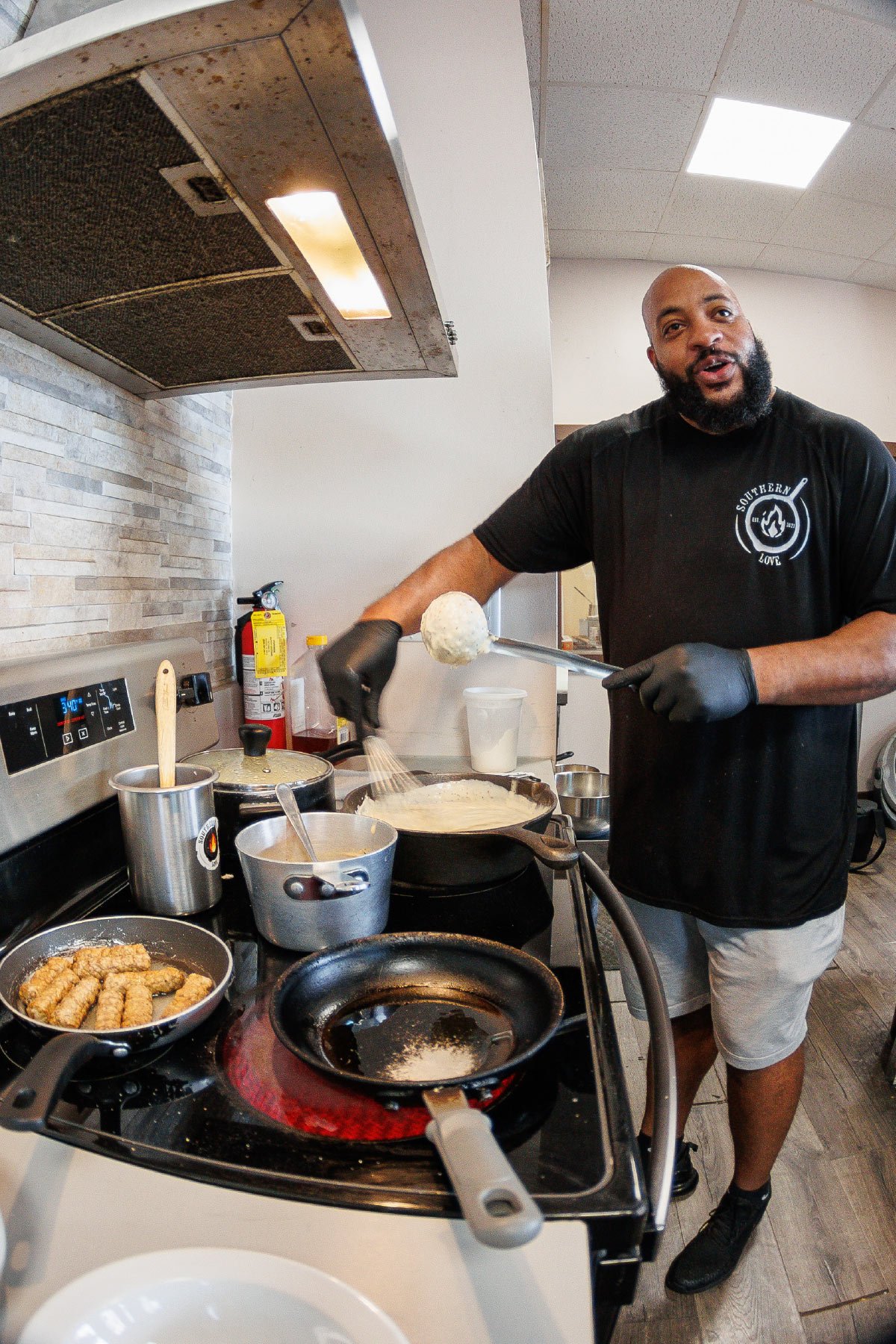
In a different part of Kaka‘ako, I was a fan of MW Restaurant before it got its first James Beard Award nominations. Helmed by married couple Michelle Karr-Ueoka and Wade Ueoka, who together spent more than 30 years cooking at Alan Wong’s, MW is upscale but warm, often with stories and a sense of humor behind the dishes.
Karr-Ueoka runs the pastry side. Her Mākaha Mango shave ice is a classic, fantastic not just because of her pastry skills, which she started learning at Per Se in New York City. Mākaha Mangoes are the best of the best—juicy and sweet, but not sugar bombs, with a round, mellow flavor. Karr-Ueoka layers shaved mango ice with Hayden mango sorbet and haupia tapioca atop lime leaf panna cotta. I ate so many last year that my doctor called and asked me to cut back.


On the savory side, Ueoka’s sense of humor once produced a bite-size “Spam musubi”—house-made Spam of smoked pork and arabiki sausage with a bit of tsukudani seaweed topping, all wrapped in deep-fried mochi flakes. His miso honey butterfish grabbed me, not just because of the umami-rich glaze that shellacs the fish. When Ueoka explained that he created it for a Valentine’s Day menu and the name was a play on the raunchy song by 2Live Crew, I couldn’t get it out of my head. Miso Honey. Get it?
I love that MW’s dishes support local farmers. Ueoka, blown away that Nozawa Farm corn was so sweet he could eat it raw, started using it in dishes and selling the ears downstairs to customers at Artizen by MW. The fact that so many ingredients feature the name of a local farm or ranch makes every bite more special.
The other mark of an excellent restaurant, for me, is that family and friends end up loving it as much as I do, so it becomes a place for shared memories. My niece took her family to MW twice the other month and reported that they scraped their bowls and plates clean “like the country bumpkins that we are.”


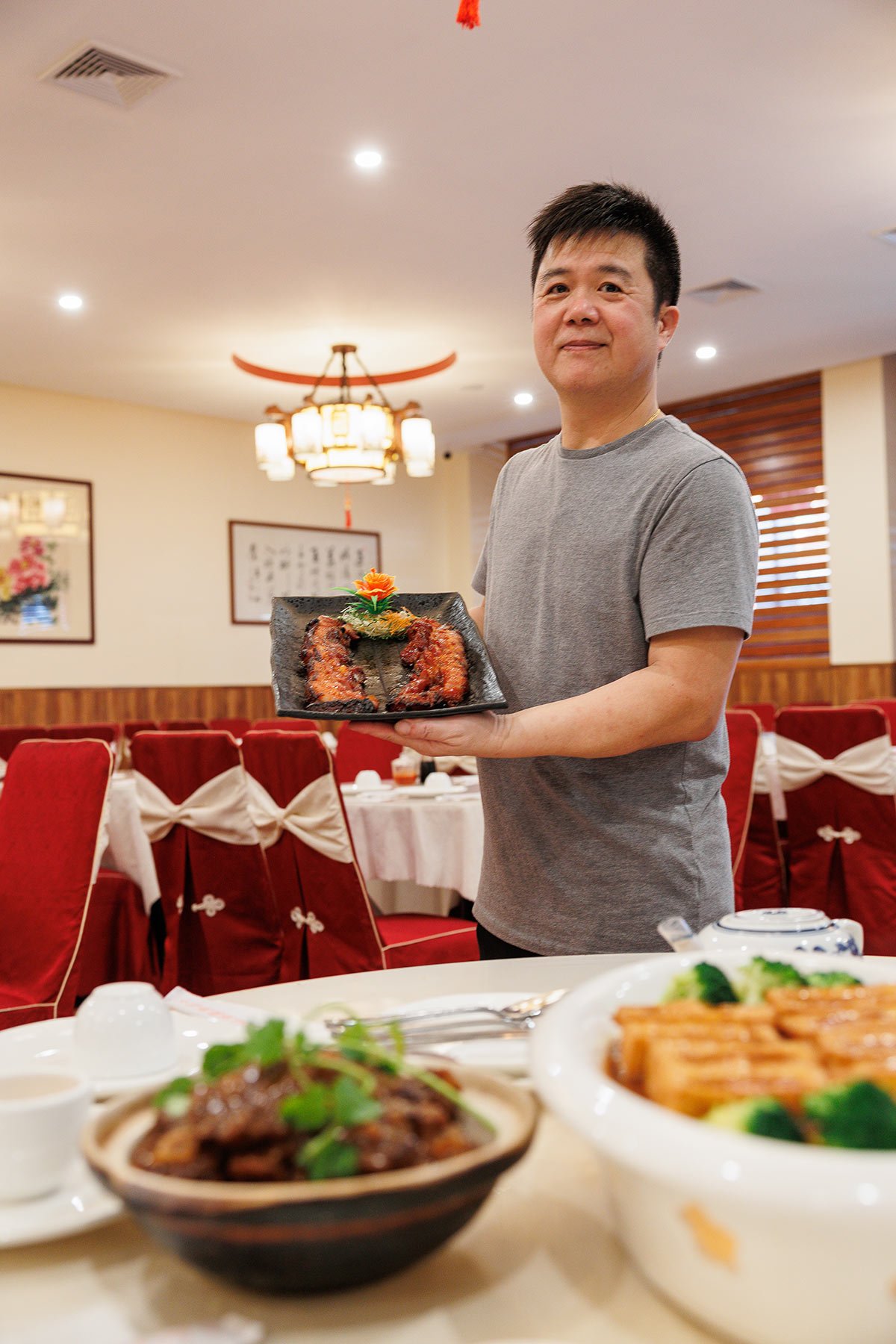
My final choice may come as a surprise because I don’t talk or post about it nearly as often as I eat there. Hawai‘i Dim Sum & Seafood opened on North King Street in Chinatown two years ago, and while people know it for the dim sum, not enough know about the dinner fare.
Chef Rui Zhang, who was previously at Mandalay in Kaimukī and before that, at Beijing Chinese Seafood Restaurant in Waikīkī, is known among locals for his fabulous char siu platter. You need to order it 48 hours in advance because Zhang needs to order the pig. He uses fresh pork, gives it a good marinade before roasting, and his char siu is always just the right balance of fat and lean. You can’t get it during the day since Zhang works the dinner shift.
When Mandalay closed, I was devastated. Now, not only has Zhang resurfaced with that char siu platter, he’s flexing his creative muscles. Restaurant owners Danny Liang and Karen Tam give him the freedom to make special items (which also require advance orders). Like what? Claypot oxtail; tofu with abalone sauce; chilled, fried sweet sour shrimp—I’ve enjoyed it all.
Hawai‘i Dim Sum’s standard dinner menu is also very good. But when I eat there, only a few other tables of 10 are occupied. By Cantonese-speaking diners. They all know what to order. And they all know the chef. I feel like I’m in a special club with a secret handshake. Now that you’ve read this, I’m hoping you’ll join that club too.
A Crown for Farmers
Kapa Hale’s Haku Lei Po‘o salad is a showcase of culinary technique and local sourcing. But mostly, it’s an ode to people who sustain us.
Keaka Lee, Kapa Hale’s chef and owner, is talking about the crowning glory of his vegetable menu. “When you think of salad, it’s usually greens and dressing, maybe with beets, maybe with tomatoes,” he says. “With the Haku Lei Po‘o, we get to celebrate the farms of Hawai‘i. It’s all these different things and textures—a foam, a crumble, maybe we dehydrate or roast something—and it gets people excited. And we get to share the stories about the farms and let them know where the ingredients come from.”
Haku Lei Po‘o was the dish Lee created when he tried out for—and got—the job as chef de cuisine at The Pig & The Lady. Cooking at Michelin-starred Gramercy Tavern in New York City, he’d seen how vegetables could outshine the entrées they garnished. When he opened Kapa Hale, Lee made it a point to forge relationships with farmers.

Young greens, Kunia Country Farms
It’s aquaponic farming in Kunia and they have some of the best local greens we’ve found. They eat like butter lettuce and take the vinaigrette without losing their shape. And the flavor itself is pretty awesome.
Red beets, carrots, tomatoes, long beans, watermelon radish from Ho Farms
It’s hard to find farmers who are as consistent as Ho Farms. They made it so we can actually get a lot of veggies and fruits throughout the entire year. Around Valentine’s Day, you can find heart-shaped cucumbers only at Kapa Hale because I’m the only one that bugs [the farm] for them.
Rainbow carrots, Pit Farms
Auntie sometimes comes in and drops stuff off, but mainly, we get the carrots from their farmers market stall. They’re consistently nice and sweet, especially when we roast them.
Heart of palm, Wailea Agricultural Group
The best heart of palm that we can get in the state, I feel. The consistency is untouchable, whether it’s the root or the stalk itself.
Coffee, Greenwell Farms
We wanted to surprise people by showing that coffee with root vegetables is beautiful. We wanted that nice, deep, rich flavor. The Greenwell farm is from back in the 1850s when an Englishman came to Hawai‘i and loved the idea of growing coffee in Kona. Their 100% Kona coffee is really consistent and special.
‘Ulu, sunchoke, purple radish from Kōlea Farm
Me and Dave Caldiero [of 53 By The Sea] convinced Bill [Howes of Kōlea Farm] to do sunchokes, and he’s been growing them for us ever since. It looks like ginger, tastes like potato, and we don’t see it much, so it’s a nice story to tell people. If more farmers were like Bill, we can stop buying so much from the mainland.
